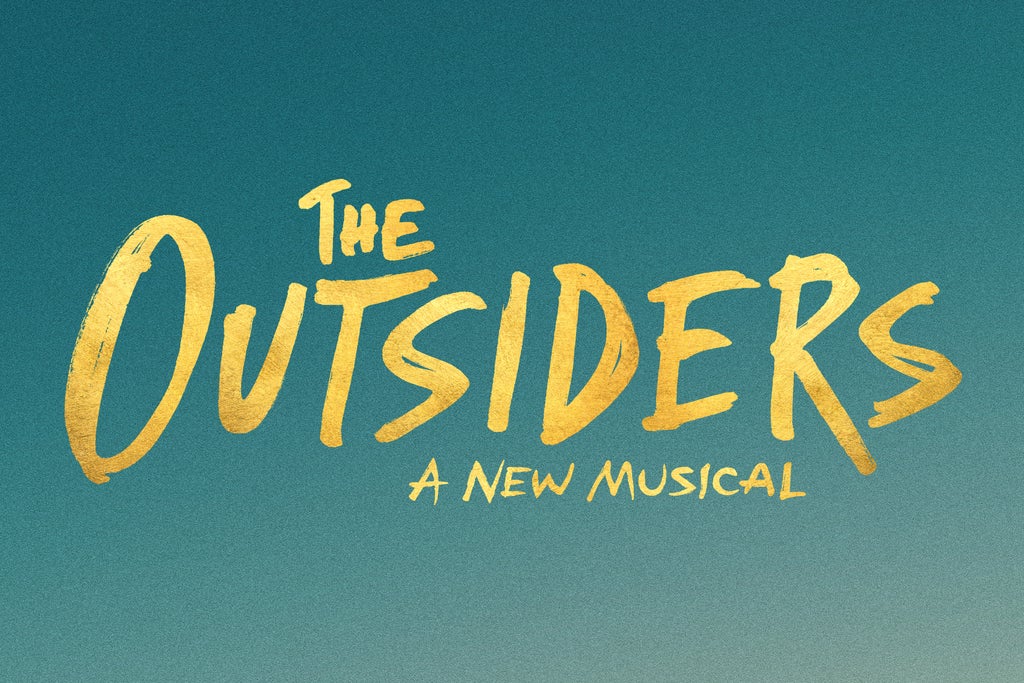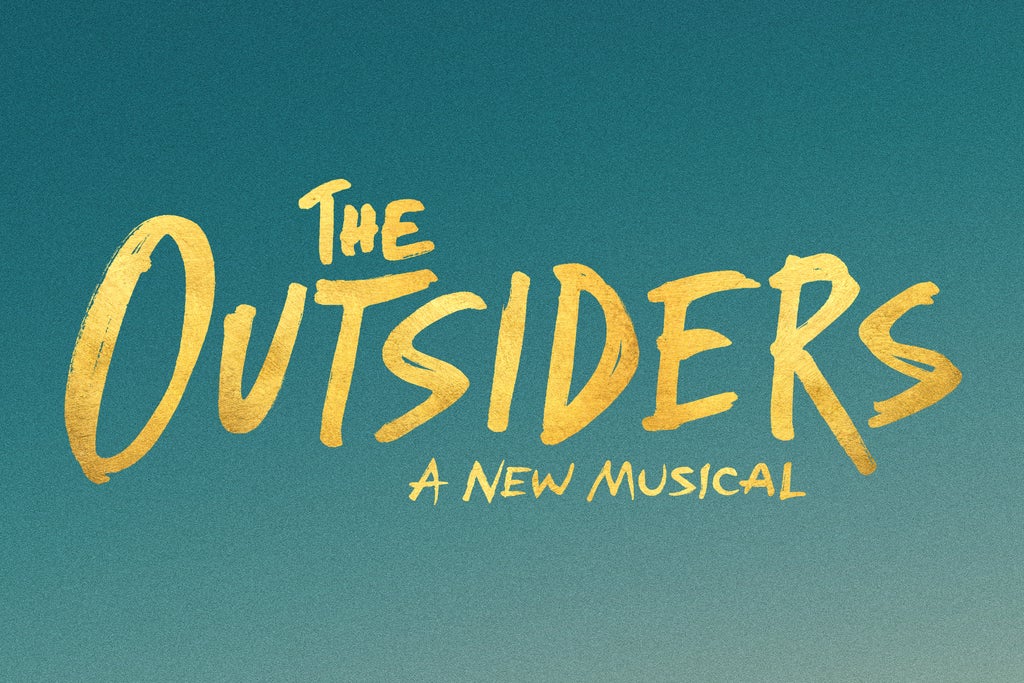Are There Lots of Musicals About Teenagers?
Jennifer Ashley Tepper Is answering your questions with Broadway Deep Dive!
Do you have a burning Broadway question? Dying to know more about an obscure Broadway fact? Broadway historian and self-proclaimed theatre nerd Jennifer Ashley Tepper is here to help with her new series, Broadway Deep Dive. Every month, BroadwayWorld will be accepting questions from theatre fans like you. If you're lucky, your question might be selected as the topic of her next column!
Submit your Broadway question in the comments here!
This time, the reader question was: How often have Broadway musicals like The Outsiders been about teenagers?
Teenagers have always technically been depicted in media, since there have always been human beings in the world that are between 13 and 19 years of age. But it wasn’t until the 1920s that the idea of teen culture began to really develop, during the decadent decade that followed the first world war. The word “teenager” was first used in the 1930s and began growing in popular usage over the next few decades as the spending power of youth was capitalized on. The 1950s was when the idea of the teenager exploded, with the popularity of rock and roll music and the impact of automobile culture ushering in a new era of teen-specific music, movies, fashion, and more. Theatre started to follow this trend as well.

In the 1920s, as teen culture first started to develop, Broadway saw more teenage characters and musical comedies set at schools. One example was the 1927 hit Good News, where the football star of a college campus fell in love with a book nerd, and another came along in 1939 with Too Many Girls, that featured a Rodgers and Hart score set to a story also on a college campus.
The 1950s’ most well known musical featuring teenagers was West Side Story (1957), which tells a serious story about prejudice and gang culture. The youth depicted on stage fall in love, attend a dance/party, and relate to their peers—all hallmarks of musicals about teenagers—but they do so within a dark, modern day Romeo and Juliet framework. It’s interesting to note that there are four adults in West Side Story as originally written; the adults on stage are meant to be deliberately outnumbered by the teenage characters, as the show tells their story.
Earlier in the 1950s, Broadway saw Seventeen (1951) and The Boy Friend (1954). Seventeen was based on a series of stories by Booth Tarkington first published in 1914, which became a bestseller in 1916. While this was before the real advent of the “teenager”, the title indeed refers to the age of the main character, who in the musical was played by Kenneth Nelson. (Nelson would later also play a lovestruck youth in the off-Broadway smash, The Fantasticks.) Julie Andrews was only 18 years old when she starred in the American transfer of the British hit The Boy Friend, a frothy musical comedy set at a school for young ladies on the French Rivera, where teens find themselves in many a farcical situation.
In the 1960s, the teen culture taking America by storm made a significant impact on Broadway. This happened first at the start of the decade with Bye Bye Birdie, with a plot dominated by an Elvis Presley-like figure, the first electric guitar in a Broadway orchestra, and a lot of shrieking teenage fan characters. In the same decade, the less well-known Henry, Sweet Henry (1967) also featured teens inspired by their fandom for a music idol; this kind of dynamic in American culture, partially inspired by the iconic 1964 appearances of the Beatles on Ed Sullivan, was making its way to the stage. (Bye Bye Birdie also featured a tribute to that cultural Touchstone Television program.) Teenagers were also featured in 13 Daughters (1961), All-American (1962) which was set on a college campus, and of course in Hair (1968), the landmark rock musical where teenage characters gave voice to their powerful thoughts on peace, friendship, community, love, sexuality, drugs, politics, race, family, and the specific challenges of their generation.
Two Broadway musicals with younger teenagers made ripple effects in the 1970s: The Me Nobody Knows (1970) and Runaways (1978). The Me Nobody Knows was about children living in poverty in contemporary New York City, and Runaways was about children living on the streets in contemporary New York City. Both explored the dark side of life as an urban youth in the 1970s. Also in the 1970s, Grease (1972) became a phenomenon, portraying high school in the 1950s—although productions do often feature older actors who are not teenagers.
The 1980s on Broadway was teeming with teenagers. The following musicals are all underappreciated, and all told stories about the teen experience and/or featured teenagers: Bring Back Birdie (1981), a flop Bye Bye Birdie sequel, Merrily We Roll Along (1981), the Sondheim-Prince collaboration currently being revived on Broadway which originally intentionally featured teen actors, Do Black Patent Leather Shoes Really Reflect Up? (1982), about Catholic school education, is there life after high school? (1982), centered around a high school reunion and memories, Doonesbury (1983), based on the comic strip and about college campus life, Smile (1986), about teens competing at a beauty pageant, Carrie (1988), an infamous flop based on the iconic Stephen King novel, and Starmites (1989), about a teenager obsessed with comic books who gets sucked into one.
As amateur licensing evolved and grew over the course of the 20th century, this proliferation of musicals about teens especially appealed to middle school, high school, summer camp, and other youth markets. One major appeal behind doing a show like Bring Back Birdie was creating a sequel for all of the young people who made Bye Bye Birdie the most performed musical across America in amateur markets for many years.

In the 1990s, teenage life was represented on Broadway in shows like Footloose (1998) and Saturday Night Fever (1999), both adapted from hit movies that were previously important touchstones in youth culture. The 2000s brought shows including Hairspray (2002) and Spring Awakening (2006), period pieces asking important questions about social issues, The 25th Annual Putnam County Spelling Bee (2005) and 13 (2008) about middle school-age teens, Cry-Baby (2008), a subversive take on 1950s high school life, and Glory Days (2008), about 19-year-olds reuniting a year after high school graduation.
Stories about high school were told in Bring It On (2012), Dear Evan Hansen (2016), The Prom (2018), Mean Girls (2018), and Be More Chill (2019), as the 2010s saw shows about teenagers involve more plot lines about the elements of technology, communication, and isolation that were unique to the era. The current decade has so far included shows about teenage stories like Back to the Future (2023), How To Dance in Ohio (2023), and The Outsiders (2024).

Of course all along the way, off-Broadway has presented its own share of shows about teens, from Zombie Prom (1996) to Fame (2003) to Heathers (2014) to Teeth (2024).
The Outsiders is currently playing at Broadway's Jacobs Theatre, once home of the original production of the long-running musical about teens, Grease. Also like Grease, The Outsiders involves working class “Greaser” kids, although it has a very different tone than the earlier show. Based on the 1967 novel by S. E. Hinton and the 1983 film, The Outsiders is a stunning new musical, telling the story of brothers, both the blood kind and the chosen kind, who fight for their lives in a dangerous working class landscape that pits them against wealthy peers. The central character, Ponyboy, is only 14 years old and his concerns as a teenager involve staying afloat without his parents who have recently died and keeping himself and his friends alive, and on the flip side, getting to know a girl he likes and reading literature. The gang violence depicted in the show has echoes of the gang violence also present in the previous teenage-centered show, West Side Story, but the story and execution of The Outsiders is unique and all its own. It has been nominated for 11 Tony Awards including Best Musical.







